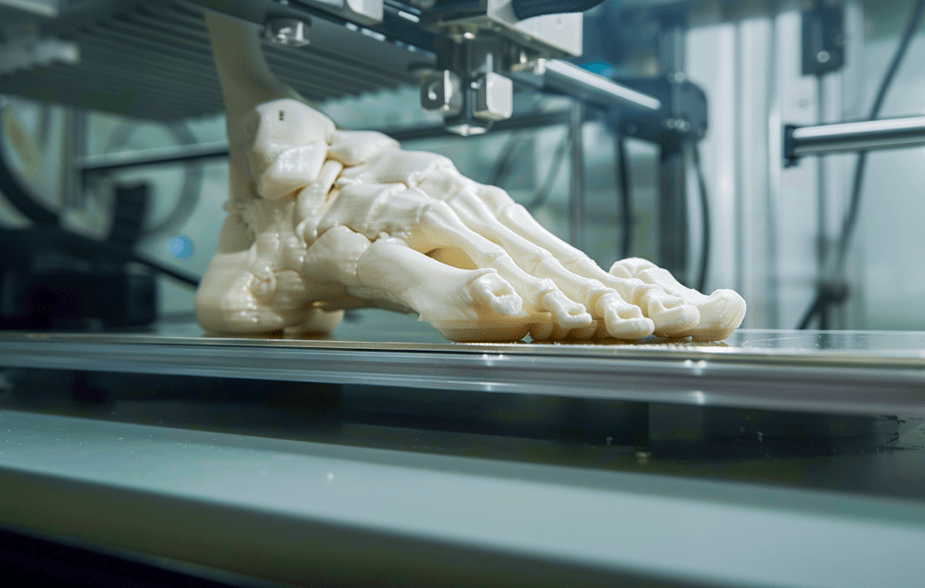Orthotics are customized devices designed to provide support, correction, and relief for various foot and lower limb conditions.
They are commonly used to address issues such as arch pain, plantar fasciitis, and foot misalignments.
Orthotics can be invaluable in improving gait, preventing certain foot conditions from worsening, and managing pain.
Traditionally, orthotics were crafted through a manual and labor-intensive process involving plaster molds and skilled craftsmanship.
However, with advancements in technology, the landscape of orthotic production has undergone a transformative shift.
3D Printing of Orthotics
Three-dimensional (3D) printing is seen to be a breakthrough technology in the field of orthotics, as it offers a highly precise and efficient production method.
The process involves creating three-dimensional objects layer by layer based on digital models. For orthotics, each device can be tailored with incredible precision to match the unique contours of an individual’s foot.
The latest technology in 3D printing of orthotics allows for a level of customization and intricacy that was previously unattainable.
Computer-aided design (CAD) software generates digital models of a patient’s foot, taking into account anatomical details and existing conditions.
These digital models guide the 3D printer to produce custom-made orthotics that are effective and remarkably comfortable.
What Raw Material is Used in 3D Printing of Orthotics?
The raw materials used typically include thermoplastic or photopolymer resins. These materials are chosen as they are flexible, comfortable, and durable. The blend of materials may vary based on an individual’s specific needs.
The ability to select from a range of materials allows for a personalized approach, ensuring that the orthose is effective and suits the wearer’s lifestyle and preferences.
3D-printed orthotics are suitable for a wide range of foot and lower limb conditions, including:
- Plantar Fasciitis: 3D-printed orthotics can provide targeted support to reduce inflammation and manage pain.
- Flat Feet or High Arches: Customization allows for orthotics that address specific arch issues
- Bunions and Misalignments: Individuals can benefit from orthotics that correct the foot’s positioning and distribute pressure more evenly.
- Sports Injuries: Athletes often turn to 3D-printed orthotics to address sports-related injuries and enhance performance by optimizing biomechanics.
- Diabetic Foot Conditions: Precision design allows for orthotics that accommodate the unique needs of individuals with diabetes
3D-printed orthotics represent a groundbreaking advancement in the world of foot care, offering a much higher level of customization and precision than before.
Conclusion
If you struggle with foot conditions or discomfort, be sure to consult with a podiatrist soon. A custom-made orthose may just be what you need! ♦
Podiatrist newsletter article provided by LRW Media. Images provided by Shutterstock.
